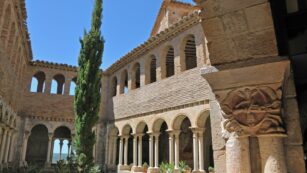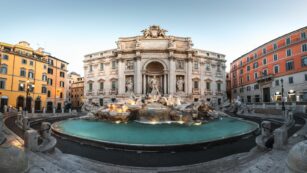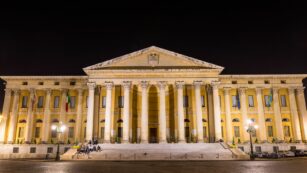European architecture tells a story of time, culture, and technology interwoven into an eclectic tapestry of design. From the classical grandeur of ancient Roman structures to the soaring spires of Gothic cathedrals, each style marks a distinct period in history, reflecting the social, economic, and political climates of its time. As travelers and historians alike traverse the continent, they encounter a visual feast of architectural diversity, each building and byway narrating its own unique heritage.
This exploration of European architecture isn’t just a journey through stone and mortar but a deeper dive into the evolution of European society itself. Understanding these styles provides insight into the forces that shaped them, from the feudal systems of the Middle Ages to the Renaissance’s burst of artistic and scientific discovery. Whether it’s the ornate flourishes of Baroque churches or the minimalist lines of modernist skyscrapers, Europe’s architectural legacy continues to captivate and inspire.
European Architecture Styles
Romanesque Architecture (11th – 12th Century)
 Characterized by its massive quality, Romanesque architecture typically features thick walls, robust piers, large towers, and rounded arches. Builders developed these characteristics, responding to military needs and the Church’s influence, as seen in the heavy stonework of structures like the Abbey of Sainte-Foy in France. Decorative arcading and modest stained glass windows adorn many Romanesque buildings, emphasizing solidity and impressiveness rather than delicate detail.
Characterized by its massive quality, Romanesque architecture typically features thick walls, robust piers, large towers, and rounded arches. Builders developed these characteristics, responding to military needs and the Church’s influence, as seen in the heavy stonework of structures like the Abbey of Sainte-Foy in France. Decorative arcading and modest stained glass windows adorn many Romanesque buildings, emphasizing solidity and impressiveness rather than delicate detail.
Gothic Architecture (12th – 16th Century)
Gothic architecture marks a striking departure from the solid Romanesque style, reaching skyward with flying buttresses, pointed arches, and ribbed vaults. This style enables larger windows and more light, evident in cathedrals like Chartres in France. Gothic churches typically sport intricate tracery, towering spires, and extensive sculptural decoration, reflecting a society that had become more urban and less focused solely on defense.
Renaissance Architecture (14th – 17th Century)
 Renaissance architecture revisits the clarity and symmetry of classical art, featuring columns, pilasters, hemispherical domes, and well-proportioned windows. These elements combine to create a sense of balance and rationality, epitomized by buildings like the Palazzo Rucellai in Italy designed by Leon Battista Alberti. Architects during this period embraced humanism, shifting focus from solely religious themes to those encompassing beauty, functionality, and proportion.
Renaissance architecture revisits the clarity and symmetry of classical art, featuring columns, pilasters, hemispherical domes, and well-proportioned windows. These elements combine to create a sense of balance and rationality, epitomized by buildings like the Palazzo Rucellai in Italy designed by Leon Battista Alberti. Architects during this period embraced humanism, shifting focus from solely religious themes to those encompassing beauty, functionality, and proportion.
Baroque Architecture (17th – 18th Century)
Baroque architecture emerges as an ornate expression of power and control, using dramatic contrasts, grandiose scales, and a blend of colors and textures to evoke emotional responses. Notable for its elaborate decorations and dynamic complexity, Baroque buildings such as the Palace of Versailles in France illustrate the desire to impress and overwhelm. Structures often feature expansive hallways and decorative stairways, emphasizing extravagance and luxury.
Neoclassical Architecture (18th – Early 19th Century)
 Neoclassical architecture reflects a renewed interest in classical ideals of simplicity and symmetry, primarily influenced by the archaeological discoveries of the time, such as Pompeii. Buildings display restrained ornamentation, a stark contrast to the preceding Baroque style, with a focus on structures like the Pantheon in Paris. This style denotes a return to simplicity and a reflection of the democratic ideals rising in prominence during the period.
Neoclassical architecture reflects a renewed interest in classical ideals of simplicity and symmetry, primarily influenced by the archaeological discoveries of the time, such as Pompeii. Buildings display restrained ornamentation, a stark contrast to the preceding Baroque style, with a focus on structures like the Pantheon in Paris. This style denotes a return to simplicity and a reflection of the democratic ideals rising in prominence during the period.
These styles, each responding to the social and political climates of their time, contribute significantly to the rich architectural heritage of Europe. They showcase the continuity and change in societal needs and desires, illustrating Europe’s capability to adapt and evolve artistically and functionally.
Modern and Contemporary European Architecture
 Europe’s architectural journey beautifully illustrates the continent’s history and cultural evolution. Each style, from Romanesque to Rococo, not only tells a story of aesthetic development but also mirrors the societal changes and technological advancements of its era. These structures stand not merely as remnants of the past but as living narratives that continue to influence modern design philosophies.
Europe’s architectural journey beautifully illustrates the continent’s history and cultural evolution. Each style, from Romanesque to Rococo, not only tells a story of aesthetic development but also mirrors the societal changes and technological advancements of its era. These structures stand not merely as remnants of the past but as living narratives that continue to influence modern design philosophies.
Investing Beyond the Blueprint
Today’s architects draw upon this rich heritage blending traditional elements with innovative materials and techniques. This fusion ensures that while European architecture respects its profound history it also embraces the possibilities of the future. The enduring legacy of Europe’s architectural history thus remains a cornerstone of its cultural identity inspiring new generations to both preserve and innovate.

